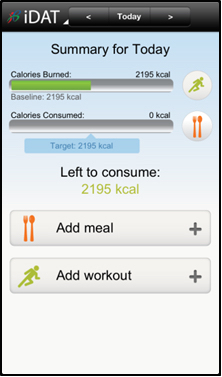 A recently-published 8-week study of diabetes patients, published in the Journal of Medical Internet Research, showed that only about 20 percent used an app provided by their clinician with any sort of regularity. Of those, only half were active users.
A recently-published 8-week study of diabetes patients, published in the Journal of Medical Internet Research, showed that only about 20 percent used an app provided by their clinician with any sort of regularity. Of those, only half were active users.
In the small study, a group of Singaporean researchers recruited 84 patients with type 2 diabetes, many of whom were recently diagnosed. They picked patients who had familiarity with smartphones and could read English, but hadn't ever used this particular app before.
Patients were instructed in the use of the interactive Diet and Activity Tracker, or iDAT app, which was created by Singapore's government. The app doesn't track blood glucose, but does help users track their caloric intake and activity, which it tracks via a built-in GPS step counter. It also helps users set goals and track progress, and to share their progress on Facebook.
After eight weeks, the researchers analyzed the usage of the app and found that 76.8 percent of the study participants were "minimal" users, 11.9 percent were "intermittent to waning" users, and 9.5 percent were "consistent" users.
"Healthcare providers who recommend health-related apps alongside diet and exercise instructions should be aware that only 2 in 10 are likely to use the apps and only 1 in 10 is likely to be a consistent user," researchers wrote. "...Further research is needed to understand the user's psychological construct in the three trajectory groups, which will influence their app adoption. The design, features, and functionality of the respective app are other potential factors that can facilitate or hinder the user's engagement with the app and this requires further investigation."
There were some predictive factors as to who did and didn't use the app. Although the sample was roughly half-male and half-female, female users were significantly more likely to become consistent users. The consistent user group was also correlated with those who reported a high exercise motivation at baseline -- that is, people who came into the study already motivated to exercise.
The study was small, short-term, and conducted in another country, so the results aren't especially generalizable. But they do illustrate a larger point in mobile health research: that there's a big difference between offering patients an app and those patients actually using it. And it gives some credence to an oft-cited criticism of behavior change apps especially: that the patients who do make use of mobile health apps may be those who are already motivated without the app.



















